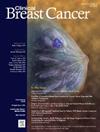乳腺癌治疗前接受胚胎冷冻保存的妇女的利用和生育能力保存结果:一项荟萃分析。
IF 2.5
3区 医学
Q2 ONCOLOGY
引用次数: 0
摘要
我们的目的是评估在乳腺癌治疗前冷冻保存胚胎的妇女的生育保存率(至少有一个活产的妇女的比例)和利用率(使用冷冻保存胚胎的妇女的比例)。PubMed和Cochrane图书馆数据库被检索到2024年12月。我们纳入了所有报道妊娠结局、返回冷冻胚胎移植的妇女人数和保留生育能力的妇女人数的研究。主要观察指标为利用率和生育保存率。次要结局指标为植入、临床妊娠和活产率。在这12项研究中,有9项符合标准,其中包括12126名冷冻保存胚胎以保存生育能力的乳腺癌妇女。在9项报告尝试总数的研究中,424名妇女接受了863次胚胎移植。根据这些研究,临床妊娠率和活产率分别为50% (95% CI: 35-65, I2: 80%)和33% (95% CI: 22-46, I2: 76%)。利用率和育性保存率分别为18% (95% CI: 9-32, I2: 95%)和39% (95% CI: 29-51, I2: 48%),均来自随机效应模型。在乳腺癌治疗前冷冻保存胚胎的生育能力保存似乎是有希望的。然而,冷冻胚胎的利用率很低。需要更多样本量更大、随访时间更长的研究来评估长期效用率。本文章由计算机程序翻译,如有差异,请以英文原文为准。
Utilization and Fertility Preservation Outcomes in Women Undergoing Embryo Cryopreservation Before Breast Cancer Treatment: A Meta-Analysis
Our aim was to assess fertility preservation (the proportion of women who had at least 1 live birth) and utilization rates (the proportion of women who utilized their cryopreserved embryos) rates among women who cryopreserved their embryos before breast cancer treatments. PubMed and Cochrane library database were searched until December 2024. We included all studies that reported pregnancy outcomes, the number of women who returned for frozen embryo transfer, and the number of women who preserved their fertility. The primary outcome measures were the utilization and fertility preservation rates. Secondary outcome measures were implantation, clinical pregnancy, and live birth rates. Of the 12 studies, 9 met the criteria, encompassing >2126 women with breast cancer who cryopreserved their embryos for fertility preservation. In 9 studies that reported the total number of attempts, 424 women underwent 863 embryo transfers. Based on those studies, the clinical pregnancy and live birth rates were 50% (95% CI: 35-65, I2: 80%) and 33% (95% CI: 22-46, I2: 76%), respectively. The utilization and fertility preservation rates were 18% (95% CI: 9-32, I2: 95%) and 39% (95% CI: 29-51, I2: 48%), respectively, all from random-effects models. Fertility preservation success with embryos cryopreserved before breast cancer treatments seems to be promising. However, the utilization rate of cryopreserved embryos is low. Additional studies with larger sample size and longer follow up are required to evaluate the long-term utility rates.
求助全文
通过发布文献求助,成功后即可免费获取论文全文。
去求助
来源期刊

Clinical breast cancer
医学-肿瘤学
CiteScore
5.40
自引率
3.20%
发文量
174
审稿时长
48 days
期刊介绍:
Clinical Breast Cancer is a peer-reviewed bimonthly journal that publishes original articles describing various aspects of clinical and translational research of breast cancer. Clinical Breast Cancer is devoted to articles on detection, diagnosis, prevention, and treatment of breast cancer. The main emphasis is on recent scientific developments in all areas related to breast cancer. Specific areas of interest include clinical research reports from various therapeutic modalities, cancer genetics, drug sensitivity and resistance, novel imaging, tumor genomics, biomarkers, and chemoprevention strategies.
 求助内容:
求助内容: 应助结果提醒方式:
应助结果提醒方式:


